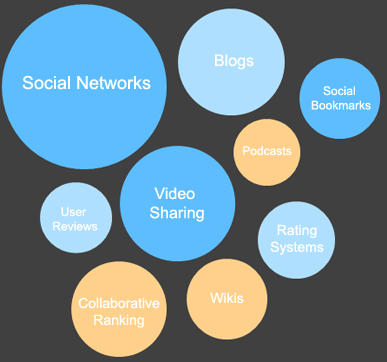The ties that bind are more often than not based on memories. Memories of events, people, relationships, daily life, and exceptional moments, both personal and historical. Our bodies are like scrapbooks. We write our memories all over our bodies in the course of a lifetime.
We are in the early days of lives lived at the edges of the virtual and the real. Notwithstanding the power of the computer screens we hold in our hands or the larger screens that now broadcast to us, all screens are flat and in the case of the iPad thin and beautiful. These mediated instances bring us closer to the people we love (through Skype or Facebook) and distance us at the same time from the physical pain and joy of touch and embodied dialogue. So close and yet far away. As more information floods into our minds and bodies and as more and more of the communications process is governed by mediators of greater and greater complexity, we have to start asking some hard questions about the fragile nature of what we are doing.
For example, much of the electronic information of the 1980’s is lost. More importantly, so much of the material produced during that era cannot be easily transferred from its original form into more contemporary technologies. In fact, how much of the massive exchange of information that we are now producing will still be around and accessible ten years from now? The pace of change means that even if the information is available, will we be able to realize its importance? What interpretive tools will we be able to apply to processes that appear and disappear so quickly? History may provide us with narratives, but personal memories are unstructured and thus for the most part forgotten. Many people now have thousands of photographs stored on computers and hard drives. The challenge is how to manage all of that data. The even greater challenge is to link memories to the images as the pictures proliferate.
All of this is a round about way of saying that online communities of varying sorts are highly mediated not only by technology but by time. We tend to think of networks in spatial terms. Time is more difficult to picture because in the case of Internet time, it is non-linear.
In other words, as we glance about picking this and that from the Twitter stream, or quickly reading a short piece on a web site and then just as quickly clicking through a series of links, we are creating a non-linear time line. The results are more like a montage, abstract and real at the same time. I find it amusing that the Twitter stream is timed according to date and time of entry. Add hash marks and we are speedily scrolling through a web of links, comments and further comments. Even if the streams were preserved, the context would be lost. Even if our memories were perfect, the cumulative effect cannot be contained.
Non-linear processes are wonderful because they defy easy explanation. They cannot be packaged into neat or modular statements. So, the irony is that social media are drunk with the use of language and constrained by the fact that most of the discourse they produce is so specific to the moment, that it cannot last. I am not one to argue for the end of history, but our memories are normally fragmentary and even as we build narratives around those fragments, we lose far more than we retain. So, this raises the further point around the necessity of conversation through social media. Clearly, as an extension of existing friendships or as the base for building new ones, social media work. Conversations in this ever expanding universe are complex and of great utility to interlocutors. But, the intensity of fragmentation has also been accelerated and with it comes the dangers of even greater loss.
Time is a strange creature. Virtual spaces make it seem as if time can be manipulated. (This is after all the central theme of William Gibson’s early work on cyberspace.) The interface of the real and the virtual makes it seem as if the preservation of memories can be achieved by archiving them. But no one anticipated the human obsession with data. How many of you would knowingly explore a three year-old website? It just doesn’t feel relevant.
Social media are redefining this complex communications landscape. But what if that landscape has no solid geography? What if the history of its formation cannot be traced other than through a series of fragments that don’t connect? We are seeing the formation of a new kind of oral culture and as historians know, oral cultures retain the stories they want to hear and quickly dispense with everything else.
This is the last entry of this series. Follow me on Twitter @ronburnett
*Take a look at the video below*. The first cinematic encounter with wireless technologies from 1922!!
" Two women walk towards the camera on a city street. They stop beside a fire hydrant (this is presumably the United States of America). C/U of the women winding a wire around the top of the fire hydrant. One of the women holds a small box."
"It's Eve's portable wireless 'phone - in 1922." (from the Pathé archives)
EVE'S WIRELESS
 Monday, July 12, 2010 at 5:23AM
Monday, July 12, 2010 at 5:23AM 

![Reblog this post [with Zemanta]](http://img.zemanta.com/reblog_e.png?x-id=63c1bd6c-d893-4690-8773-7ff6c68db9e4)

![Reblog this post [with Zemanta]](http://img.zemanta.com/reblog_e.png?x-id=ad3106e8-64d0-445b-8d8d-f54233a8edb0)
![Reblog this post [with Zemanta]](http://img.zemanta.com/reblog_e.png?x-id=fb687dfc-6d78-403f-ac4e-919ed3fb7aa4)
![Reblog this post [with Zemanta]](http://img.zemanta.com/reblog_e.png?x-id=64926e95-e8c3-4ebc-9260-09863c3a040d)
